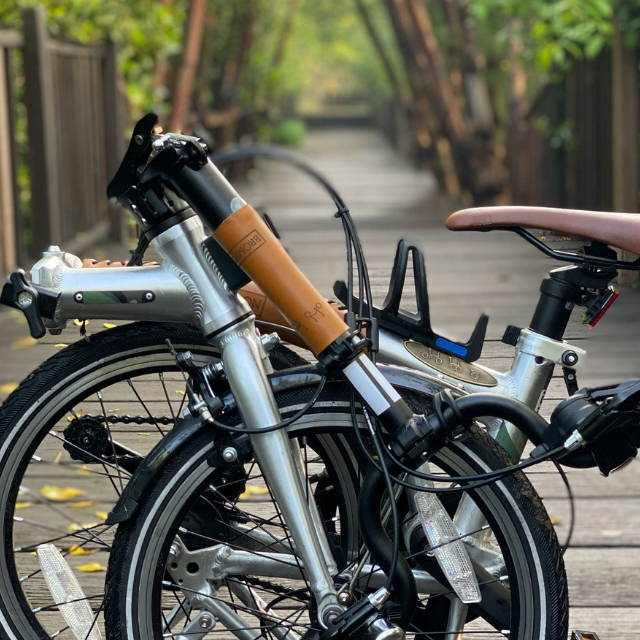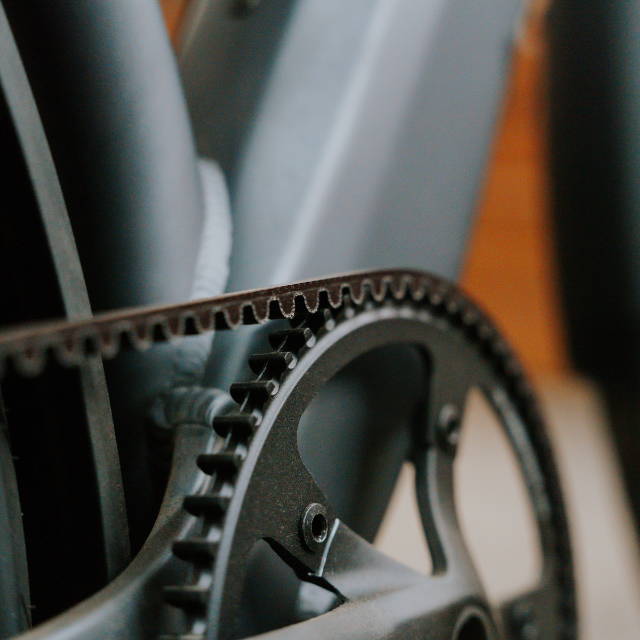My Trip to Japan: An E-Bike Wonderland?
Written by: Rémy Rossi | February 3, 2024 | Time to read 9 min
Forget about Amsterdam and Copenhagen, there’s a lot happening on two wheels in Tokyo. I’m back from a recent trip to Japan where the cycling culture I saw blew me away.

More about the Author: Remy Rossi
Rémy Rossi is a bike writer, mechanic, and educator who got his start in community-based bike shops and co-ops. With a decade in the industry, he still wrenches on bikes when he can and plays bike polo on a fixie.

This winter, I traveled with my family to visit my twin who lives in Tokyo. Having done just five minutes of Duolingo the week prior, I was ready upon arrival to fully rely on my brother— who is fluent in Japanese— for translation, itinerary planning, and general know-how. But to compensate for my ignorance— and avoid seeing the country through the experiences of others— I stumbled upon a more unique means to relate with Japan in a more personal way: bicycles.
👋 Upway says hello!
Starting off with a bang

When I see bikes, I feel a sense of comfort or at least whatever you feel when you see something you understand— maybe a bit like feeling at home. But I was very, very far from home. I’m used to having lived in Europe for several years, but Japan is different. Still, I was having fun trying to understand Tokyo via its cyclists and bike culture, and that would continue for the whole trip. I’ll piece together some of my fluffy findings and rambling ruminations below.
The Mamachari: “Mom bikes”

Common features of a mamachari:
- Low, step-thru frame
- External battery and pedal-assist motor
- One or two child seats (or baskets)
- High handlebars and upright riding position
- Integrated lights

Some estimates claim that over 90% of all bikes in Japan are mamachari. But how can such a relaxed, cruiser-style bike rule the road? The average bike trip is less than 2.5 kilometers so people don’t need super-efficient bikes to go such short distances. Plus, the average bike speeds are shockingly low around the city— I was surprised by just how slow cyclists were moving.
Mamachari make it easy to simply hop on and ride in normal clothes, pedaling comfortably all the way to the grocery store or your child’s school. Nearly all models are step-thru electric bikes that are very low to the ground, perfect for shorter riders and stable handling. Not a lot of road e-Bike models or larger fat tire e-Bikes around, that’s for sure.
Nearly all the e-Bikes I saw were made by Panasonic, and many others were from Bridgestone and Yamaha. These are renowned Japanese brands with a global reach, but it seems that their e-Bikes stay within the domestic market. I noticed that the battery location is almost always behind the seat post and there’s a mix of hub-drive and mid-drive motor— electric bikes in Japan won’t ever have a throttle, though.
Japan’s cycling culture


And this is possible for a few reasons. As mentioned before, most cycle trips are extremely local, around one or two kilometers. There’s no reason to bike longer distances, because you can use Japan’s exceptional trains to get around efficiently. Studies show that bikes are faster than all other forms of transit for distances of up to 5 kilometers— I think this is because car speed limits are low and trains take over as the ideal option for longer trips.
Inside the city, cars are mostly limited to 30 km/h (that’s 18.6 mph). That makes it safer to cycle around cars and often much faster to use a bike. Cars are frequently a minority on Tokyo’s pedestrian- and bike-heavy small streets.
The sidewalk free-for-all

It’s like watching a master artist at work seeing a bike weave through pedestrians, oscillating between street and sidewalk whenever convenient. Riders are always ready to slow or put a foot down if needed, but we didn’t see any incidents during the entire two weeks (other than the one caused by siblings and I at the start of the trip, of course).

This may be due to the Japanese custom of thinking of others before themself and constantly anticipating each other’s movements— it seems that pedestrians and cyclists can tell the future, so they don’t end up in sticky situations. A busy supermarket or crowded train station in Japan is a similar kind of organized chaos. Good luck riding a bike on a New York City sidewalk, though— now that’s a recipe for disaster.
Adrenaline rush: keirin racing


Looking to sell your used e-Bike? 🤝 Get an even better discount when you trade in your electric bike now! Click here for a price estimation
The Itō velodrome

My family and I had decided to spend New Year’s in Itō, a low-key coastal town known for its onsen, or natural hot springs due to volcanic activity. We ate dinner at a restaurant and I noticed some keirin memorabilia and signed photos on the wall, suddenly remembering that this sport actually existed. I researched if there was a velodrome nearby or any races, and it turned out that Itō has one of Japan’s few dozen keirin venues! And it was hosting a tournament that weekend. Time to make some big bucks.
Ready, set… bet!

The next day, we hiked up to one of the highest points in town where they somehow tucked away a huge velodrome and keirin complex into the mountain. We had gotten the schedule wrong and arrived too early, but there were already some grandpas hanging out at the venue, researching the latest odds, and watching other races happening across the country. I had spent the night prior researching how to bet so that we would have at least a fighting chance— I had my betting notebook ready and everything.
Now, the aesthetics of this place and the races are a serious blast from the past. The racers still ride steel bikes and wear simple but bright monochrome Lycra kits— think crayons, Power Rangers, or Teletubbies. The faded pastel palette extended to the track design and public seating, although most people were busy indoors oscillating between betting machines and television monitors updating the odds.
The races got started— they last only a couple minutes and are spaced around 15 minutes apart. That was enough frenzy to get our bets in and run around the stadium, attracting just the right amount of attention as the only foreigners (and attendees under 65 years old).
I won a couple of small bets, but came out negative— as a complete novice, I wasn’t betting big anyway. Our family friend, however, won big on a long-shot bet in the last race, taking home a crisp ¥10,000 note and some change! The serendipity of Itō keirin tournament and its other-worldy velodrome was a major highlight of the trip and a cycling experience I’ll likely never have again. That said, there’s online keirin betting so I can participate anywhere in the world— not sure that’s such a smart idea, though.



